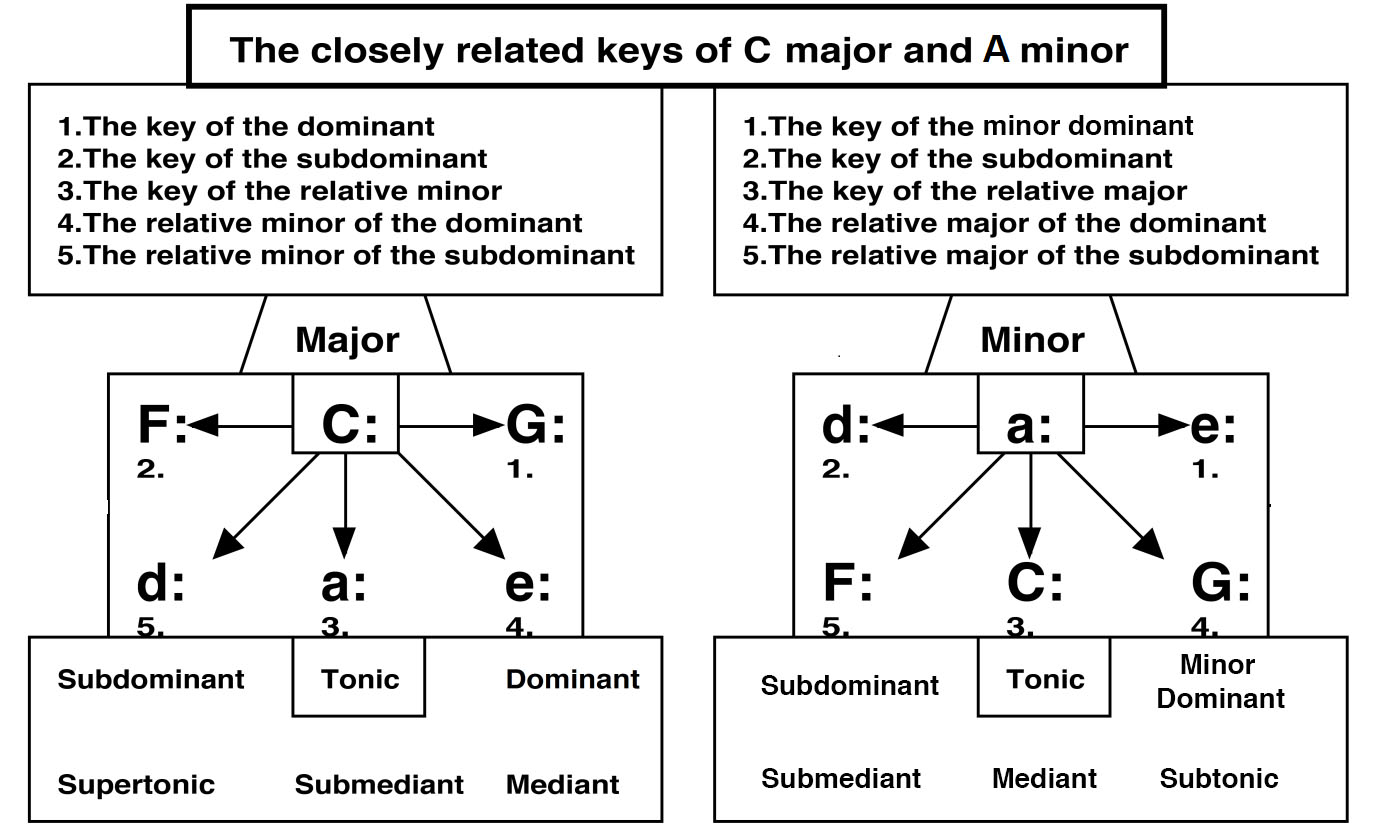17 Common Chord / Pivot Chord Modulation
The most common way to modulate is to use a chord that is common in both the home key and the goal key to “pivot” between the two keys.
When key signatures are one sharp or one flat away from each other, they are considered closely related. Compositions from the Baroque and early Classical period tend to modulate to these closely related keys.

The close relationship of the relative major and minor keys can be seen in the number of common chords between them. For example, between the keys of C major and A minor there are four possible common chords: Dm, F, Am, and Bo.
Common chord possibilities between the key of C major and its five closely related keys
Common chords between the key of A minor and its five closely related keys

Note that all chords are all from natural minor to avoid the raised leading tone.
The most common pivot chord modulations in major keys are:
-
To the key of the dominant
-
To the key of the relative minor
The most common pivot chord modulations in minor keys are:
- To the key of the minor dominant
- To the key of the relative major
The key is established using a chord progression that includes a dominant chord, until reaching the pivot chord that is present in both keys. From that point on, harmonize in the new key and establish it with a cadence. In the Roman numeral analysis, indicate the function of the pivot chord in both keys and then continue the analysis in the new key with accidentals indicating the altered notes over the bass.
Pivot chords are often the subdominant in the new key, but other pivot chords are also possible.
examples
Modulations occur within compositions and are preceded and followed by other phrases. These examples only show how to smoothly and musically move from one key to another.
From a major key to the dominant
The C major first inversion chord is present as I6 in the key of C major and IV6 in the key of G major, thereby serving as the pivot chord.
From a minor key to the minor dominant
The C minor chord functions as i in the key of C minor and as iv in the key of G minor.
From a major key to the relative minor
The D minor chord is present as ii in the key of C major and as iv in the key of A minor, thereby serving as the pivot chord.
From a minor key to the relative major
The C minor chord is present as iv in the key of G minor and as ii in the key of B-flat major.
Practice 2
